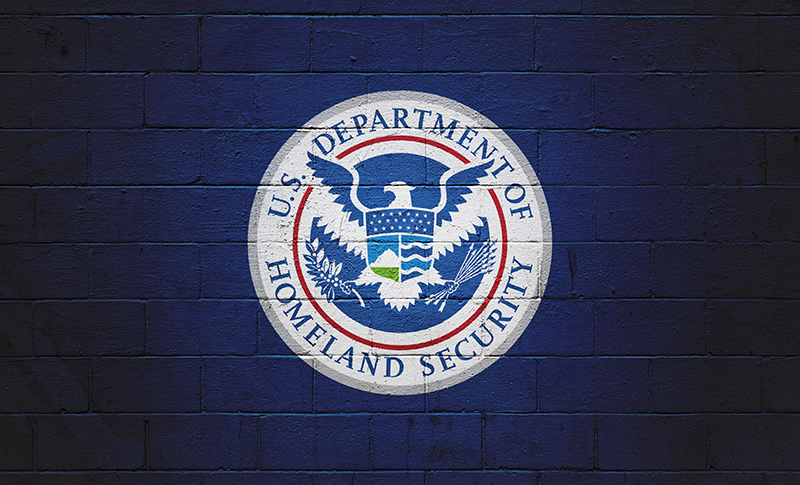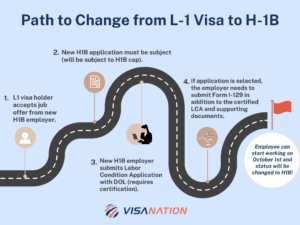The (Misleading) DHS ‘Fact Sheet’ That Really Didn’t Age Well
On July 25, DHS issued a “Fact Sheet” that was light on “facts” but heavy on wishful thinking, elision, and self-congratulation, captioned “Data From First Six Months of Parole Processes for Cubans, Haitians, Nicaraguans, and Venezuelans Shows That Lawful Pathways Work”. It hasn’t aged well, given that CBP encounters of nationals of those four countries have surged in the interim. Not only do those stats show that such so-called “lawful pathways” don’t work, worse, they reveal that Biden’s illegal schemes are degrading border security and adding more work to already overburdened DHS.
“CHNV Parole”. That fact sheet referenced an “unprecedented” (read: “illegal”) scheme concocted by the administration to hide the scope of its Southwest border disaster from Congress and the American public by funneling would-be illegal border-crossers into the United States through the ports of entry on two-year periods of “parole”, complete with work authorization.
The administration has christened that scheme the “CHNV parole program”, an abbreviation for the four countries whose nationals benefit from it: Cuba, Haiti, Nicaragua, and Venezuela.
CHNV was first announced in an equally factually questionable White House “fact sheet” issued on January 5, captioned “Biden-Harris Administration Announces New Border Enforcement Actions”. Here’s how the administration spun the program there:
Today, the Biden Administration is announcing it will extend the successful Venezuela parole process and expand it to nationals of Nicaragua, Haiti, and Cuba. Up to 30,000 individuals per month from these four countries, who have an eligible sponsor and pass vetting and background checks, can come to the United States for a period of two years and receive work authorization. Individuals who irregularly cross the Panama, Mexico, or U.S. border after the date of this announcement will be ineligible for the parole process and will be subject to expulsion to Mexico, which will accept returns of 30,000 individuals per month from these four countries who fail to use these new pathways.
The “up to 30,000 individuals per month” part was true, but the “pass background checks” portion is misleading, at best. USCIS, which adjudicates CHNV parole applications prior to those aliens’ arrival, doesn’t appear to perform any “background checking” on the front-end, leaving that up to CBP officers at U.S. ports of entry to do that work once those aliens get here.
That’s why somewhere between .3 percent (according to data the Center has received from DHS under the Freedom of Information Act, or “FOIA”) to 4.7 percent (according to statistics DHS gave to the House Judiciary Committee) of those CHNV parolees are denied entry once they arrive.
Not that most of those aliens will be sent back. The reason why so many Cuban, Nicaraguan, and Venezuelan nationals have entered illegally under Biden (571,000-plus in FY 2022 alone) is because Washington has only tenuous diplomatic relations with their home governments and DHS usually can’t obtain permission to return them. And given that Haiti is an economic and political disaster at present (for reasons I’ll explain below), the administration is also reluctant to return nationals there.
That White House fact sheet also implicitly assumes that the aliens who take advantage of CHNV would otherwise have entered illegally. Nothing could be further from the truth.
There is no requirement that those “up to 30,000” aliens paroled monthly under the program be at the Southwest border to take advantage of this scheme, and few if any are. Most have flown directly into U.S. international airports in the interior, as my colleague Todd Bensman has explained.
Mind you, the Biden administration refuses to tell Bensman, the Center, me, its naïve and credulous stenographers in the media, or the American people or their representatives for that matter which airports those tens of thousands of CHNV parolees are flying into monthly.
That airport information, DHS claims, “would disclose techniques and procedures for law enforcement investigations or prosecutions or would disclose guidelines for law enforcement investigations or prosecutions if such disclosure could reasonably be expected to risk circumvention of the law”.
That suggests that revealing three-letter airport codes is as dangerous to enforcement as disclosing the names of sting targets or wiretap data, which simply underscores how nonsensical DHS’s non-disclosure excuse is.
The real reason the administration won’t provide that airport data is that if the elected officials — mayors, governors, congressmen, senators — in and near those airports (think JFK, O’Hare, LAX, Dulles, Miami) found out that not only was DHS busing thousands of border migrants to their jurisdictions, but also allowing thousands of would-be migrants to just fly to those jurisdictions, too, they’d have conniption fits and demand that the White House cut it out.
The final fib in that White House fact sheet relates to the threat of expulsion for an equal number of nationals of those four countries to Mexico each month as are granted CHNV parole. “Expulsion to Mexico” in that context means “expulsion under Title 42”, which the White House was planning to end when that White House “fact sheet” was issued, and did end on January 30, effective May 11.
One dispositively true fact therein, however, was that a Venezuelan parole program announced by DHS on October 12, 2022, was the model for CHNV parole. That date is crucial for understanding what has happened since, and how ridiculous the July DHS fact sheet is in retrospect.
The July 25 Fact Sheet. To read the July 25 DHS fact sheet, you would conclude that CHNV parole had single-handedly brought illegal immigration at the Southwest border to a halt.
According to the department, not only had CHNV parole “yielded positive results”, but in fact it “significantly reduced irregular migration and denied smugglers the opportunity to exploit nearly 160,000 individuals who have instead benefitted from safe, orderly and humane pathways”.
Part of that may have been true at the time, but the majority of it was some combination of wishful thinking and shameless hucksterism.
John Adams once explained that: “Facts are stubborn things; and whatever may be our wishes, our inclinations, or the dictates of our passion, they cannot alter the state of facts and evidence.” In this instance, the facts are CBP’s encounter statistics, and they do little to conform to the dictates of DHS’s passions in that July fact sheet.
How the CHNV Surge Came About. I’ll start some quick historical background, but before I do, a quick refresher: The term “encounter” in this context refers both to aliens apprehended by Border Patrol agents between the ports of entry and aliens deemed inadmissible by CBP officers from the agency’s Office of Field Operations (OFO) at those ports.
In FY 2020, Border Patrol agents at the Southwest border apprehended fewer than 17,600 nationals of the CHNV countries, more than half (9,822) of them from Cuba. CBP officers in OFO at those ports stopped 5,456 others, 66 percent of them also from Cuba.
In FY 2021, CBP encounters of CHNV migrants at the Southwest border started to soar, to 184,716, and 93 percent of them came between February (Biden’s first full month in office) and September, the last month of that fiscal year. More than 98 percent of them skipped the ports and crossed illegally.
Things only got worse from there. Between FY 2021 and FY 2022, CBP encounters of nationals from those four countries at the Southwest border increased more than threefold, to 626,410, nearly 96 percent of whom entered illegally and were apprehended by Border Patrol agents.
Why did the number of illegal CHNV migrants start to surge beginning in February 2021? Three factors.
First, like the millions of other aliens who have entered illegally since Joe Biden took office, they came safe in the knowledge that they were almost definitely going to be released into the United States, as a federal judge explained in March.
Second, unlike Mexican nationals and nationals of the “Northern Triangle” countries of El Salvador, Guatemala, and Honduras, Mexico increasingly refused to accept illegal border crossers from the CHNV countries who were subject to expulsion under Title 42.
Third, as noted above, the United States has shaky diplomatic relations, at best, with the governments in Havana, Managua, and Caracas, and Haiti had begun a descent into chaos even before President Jovenel Moïse was assassinated in July 2021.
Worse, as Bensman has explained, the Biden administration “scuttled Haiti’s plans for free elections” thereafter, backing “a de facto dictator in exchange for his willingness to accept deportees”. That made the situation there even worse, even while the president largely stopped returning Haitian migrants after receiving blowback from his own officials for the handful of Haitians he did remove.
None of these were impediments to the Trump administration’s border efforts because he was willing to use U.S. economic and diplomatic power to force Mexico City, in particular, to go along with with his border policies. Biden’s State Department has taken a more passive and subservient tone with Mexico’s populist president, Andres Manuel Lopez Obrador.
The Stubborn “CBP Encounters” Stats. Returning to CBP’s stubborn encounter statistics, however, Border Patrol apprehensions of Venezuelan nationals did fall directly after the Biden administration announced its parole program for that country in mid-October 2022: from nearly 22,000 encounters between the ports that month to fewer than 7,000 in November.
And Border Patrol apprehensions of Cubans, Haitians, and Nicaraguans declined at the U.S.-Mexico line directly after CHNV took effect: from just over 78,000 in December to 596 in February. That’s just the beginning of the story, however.
Total nationwide monthly CBP encounters of nationals from the “CHN” countries have subsequently increased from fewer than 29,000 in January to nearly 41,000 in September. Much of that increase has to do with the parole program itself, because even though those Cubans, Haitians, and Nicaraguans came on parole, they’re still inadmissible, and thus their land- and airport entries still count as encounters.
That’s the part that most favors the Biden administration, which will give you an idea of how bad it gets from here.
Even considering the effects of the parole scheme, those CBP encounter stats show that 45 percent more nationals of those three countries were encountered by CBP last month (40,999) than in all of FY 2020 (22,470). Thus, any victories Biden’s DHS can claim are only on paper, as those aliens who came in on CHNV parole are still removable, and DHS will be expected to remove most of them at some point in the not-too-distant future.
In other words, CHNV parole is simply kicking that can down the road, while making the can itself heavier.
And remember — that’s the part that’s most favorable to the administration. When you add in the Venezuelans, even those paper gains are erased.
Since DHS issued that self-congratulatory press release in July, more than 77,000 Venezuelan nationals have been apprehended by Border Patrol agents at the Southwest border, including 54,833 last month alone. That is more Southwest border apprehensions of Venezuelans in a single month than in any other month in history, and more than twice as many as the previous record holder, August (22,090).
Factor in total Southwest border encounters, including by OFO at the ports there, and that encounter total rises to 66,584 in September, a 36.8 percent increase over all of FY 2021 (48,678), and about 24 times as many CBP Southwest border encounters of Venezuelans in September FY 2020 (2,787).
Just to pile on, compare total CHNV Border Patrol Southwest border apprehensions from July when that DHS fact sheet was issued to September and you will see that they rose 363 percent in just two months, from 12,346 to 57,175.
Or compare total CBP encounters of CHNV nationals in that two-month period, and you will find a more modest 147 percent increase, from 33,755 in July to 83,476.
The best comparison, however, is between total CBP encounters of CHNV nationals between those two months: They only doubled, from 56,675 to 113,324.
Finally, if you want to see how that CHNV parole program is really just a shell-game funneling of illegal migrants from one side of the balance sheet to the other, consider the fact that nationwide encounters of CHNV nationals actually rose 15 percent between December (98,631) — the month before the White House issued its fact sheet — and that September total.
Or consider the fact that total nationwide CBP encounters of Venezuelan nationals were 113 percent higher last month (72,325) than they were in September 2022 (33,961) — the month before the Biden administration announced its Venezuelan parole program.
If those are “positive results”, I’d hate to see what “negative returns” look like.
The Wisdom of Lincoln. Abraham Lincoln once remarked, “The hen is the wisest of all of the animal creation because she never cackles until the egg is laid”. The Biden administration should heed that wise counsel and stop cackling about the short-term successes of its illegal parole programs. They’ve turned out to be one big metaphorical goose egg that is quickly turning rotten for the DHS officers left to clean up the mess.






